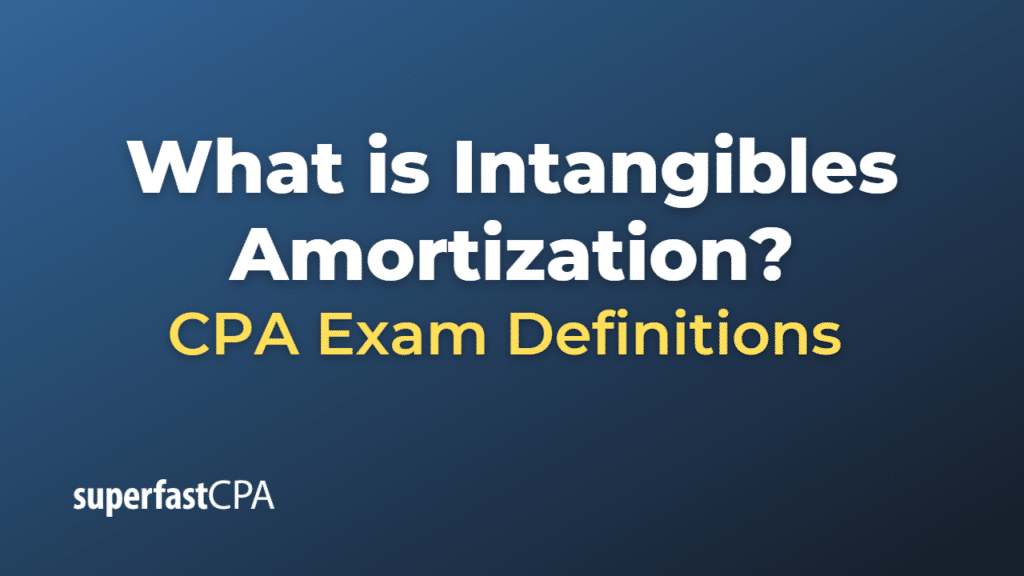Intangibles Amortization
Amortization of intangibles refers to the gradual reduction in the value of an intangible asset over its useful life, mirroring how the asset’s economic benefits are consumed over time. It’s essentially the intangible asset equivalent to depreciation for tangible assets.
Here’s how it typically works:
When an intangible asset is initially recognized on the balance sheet, it’s recorded at its acquisition cost or development cost. Then, each accounting period, a portion of this cost is expensed as amortization, reducing the asset’s carrying amount on the balance sheet. This process continues until the asset is fully amortized or until it is sold or otherwise disposed of.
The method of amortization can vary. However, the most common method is straight-line amortization, which spreads the cost of the intangible asset evenly over its estimated useful life.
For example, if a company purchases a patent for $1 million, and the patent has a useful life of 10 years, the company would record an amortization expense of $100,000 each year for 10 years.
It’s important to note that not all intangible assets are subject to amortization. Only intangible assets with a finite useful life are amortized. If an intangible asset has an indefinite useful life (like some brand names or goodwill), it is not amortized. Instead, it must be tested at least annually for impairment, which is a reduction in the asset’s value beyond normal usage.
Example of Intangibles Amortization
Let’s use the example of a company purchasing a patent to illustrate intangible asset amortization.
Let’s say that TechCompany A buys a patent from TechCompany B for $500,000. The patent is expected to provide economic benefits to TechCompany A for 10 years.
Here’s how the patent’s amortization would be accounted for:
- Initial recognition: The patent is initially recognized on TechCompany A’s balance sheet at its purchase cost of $500,000.
- Amortization: The patent has a finite useful life of 10 years. TechCompany A will therefore amortize the cost of the patent over its useful life. If TechCompany A uses straight-line amortization (which is the most common method), it will recognize an amortization expense of $50,000 each year for 10 years ($500,000 / 10 years).
- Balance Sheet Impact: Each year, the $50,000 of amortization expense reduces the carrying amount of the patent on the balance sheet. So, at the end of the first year, the patent’s carrying amount on the balance sheet would be $450,000 ($500,000 original cost – $50,000 in accumulated amortization). At the end of the second year, it would be $400,000 ($500,000 original cost – $100,000 in accumulated amortization), and so on until the patent is fully amortized.
- Income Statement Impact: The $50,000 of annual amortization is also recognized as an expense on TechCompany A’s income statement, reducing the company’s net income for the year.
This example simplifies the process but gives a general idea of how intangible assets are amortized. The actual accounting can be more complex and depends on the specific circumstances and the accounting standards being used.












